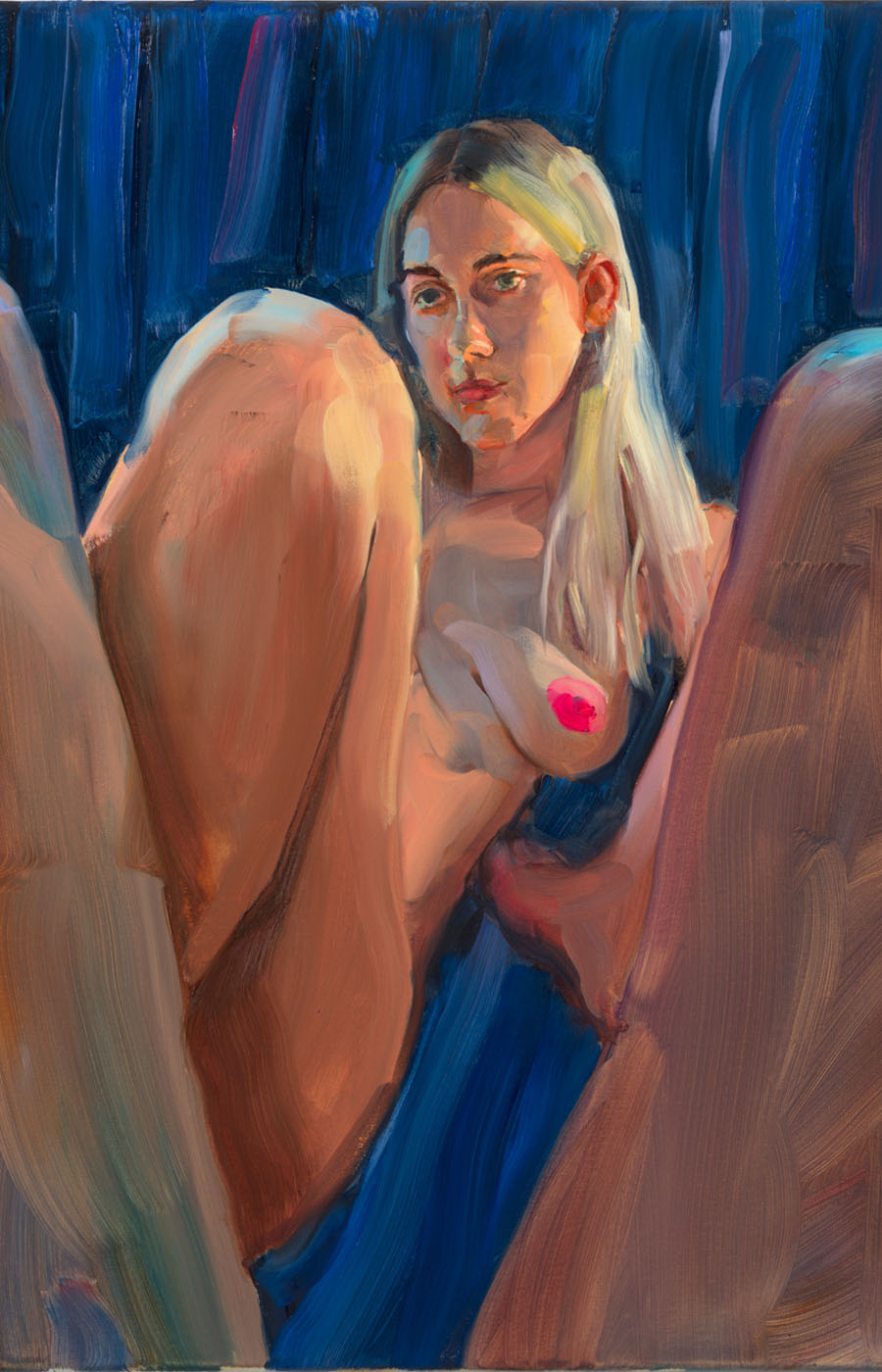MI Hi Jenna, I’m so glad having the opportunity to chat with you on the occasion of this issue of MUSE. How are you today and how is this new series of paintings taking shape? I have only seen a raw preview but it seems you are further delving into that intimate “seeing and being seen” your work stands out for…What is the impetus for this new show?
JG I’m doing great. I actually just finished painting this show and shipped it off. Now I’m pretty excited for some down time. Yes, the new show goes further down the path of looking at the looking. It’s really a continuation of my show “Uscapes” which was at Fredericks and Freiser in New York this past September. That’s where I introduced the much larger than life paintings of my partner and I with our limbs entangled in confusing ways that become almost abstract or like landscapes. In those works, my naked body kind of drags the viewer into the frame, sometimes the entry is through my parted legs. They’re about a kind of staged intimacy, and about the pleasures and discomforts of getting close.
MI Your works reveal the intimate relationship you have with the subjects and I am particularly interested in the way you have been portraying Mackenzie throughout the years. As trust and intimacy developed during the course of your relationship has your approach to the way you portray Mackenzie changed?
JG Mackenzie is an ideal subject for me not only because she’s my partner and I have access to very up close intimate moments with her, but as a musician, she’s also a public figure, and public vs private portrayal is a key subject in my work. The paintings have definitely evolved with the relationship. One of the first paintings I made of her was “Erotic hand in public” and that felt like a very “new relationship” painting. Recently I’ve begun showing her in less flattering postures and expressions, which feels like a privilege of the security of a very solid established relationship. Those portrayals feel more intimate because allowing someone to see your face and body so unselfconsciously arranged is evidence of closeness and trust.
MI When watching your paintings the spectator enters the scene through your point of view which is also that of a mother as shown in “Pose of an artist’s child”. How has motherhood influenced your work? And what’s the importance of such subject in the context of contemporary art today?
JG That painting is about depicting a subject’s reflexive sense of self preservation. I think children have a natural good instinct to shield them- selves from an unwanted gaze, and that seemed like an interesting thing to make a painting about, only painting the part of my son’s face he allowed to show. I think motherhood is a subject that has been largely marginalized for the last hundred years or so, and I’m glad to see a lot of artists starting to take it on.
Read the full interview on Muse February Issue 59.
“I just kind of dove into exploring vulnerability and made paintings that I wouldn’t have made before for fear that they’d be labeled sentimental.”
Jenna’s artwork What Am I Doing Here? I Should Ask You the Same, 2022 featured on the Art Cover of MUSE, is now part of Frick Collection’s Living Histories: Queer Views and Old Masters. An exciting year-long project featuring the work of four New York–based artists: Doron Langberg, Salman Toor, Jenna Gribbon, and Toyin Ojih Odutola. Each presents a single new work in conversation with iconic paintings in the Frick’s collection, with particular emphasis on issues of gender and queer identity typically excluded from narratives of early modern European art.









